March 2022
It is obvious and it has been clear to us from the beginning, when we planned the trip from Les Sables d’Olonne to Lanzarote: in March, it would be tough, it would be rough, it would be challenging.
With one depression after the other approaching from the West, we had to use every opportunity for sailing, first for the non-stop crossing of the Bay of Biskay (instead of going along the french and spanish coast), then around Cape Finistere, and further down South until the right moment to jump to Lanzarote.
The crew of three (Philippe, his father Christian, and myself, Martin) left Les Sables d’Olonne in the morning of March 2nd and started the crossing of the Bay of Biskey at nice wind conditions, but only 6 °C air temperature. The water has not been much warmer…
In the next three days, we had sun, clouds, rain, wind between 3 and 7 Bft, a lot of hot tea, and nicely heated cabins. Most of the time, we sailed with main and genoa, but not more than in second reef. Sometimes, we used the Code-D. And no need to use the storm jib.
ONWO ONOC did not care very much about the wind and the waves: comfortable and smooth sailing!
On March 5th, a wunderful sunrise welcomed us when we approached the Ria da Coruña. 72 hours and
360 nm after leaving France, we moored in the Marina Coruña. And there was a glimpse of spring in the air!

Leaving Les Sables d'Olonne

The first sunset

Sun, clouds, and good winds
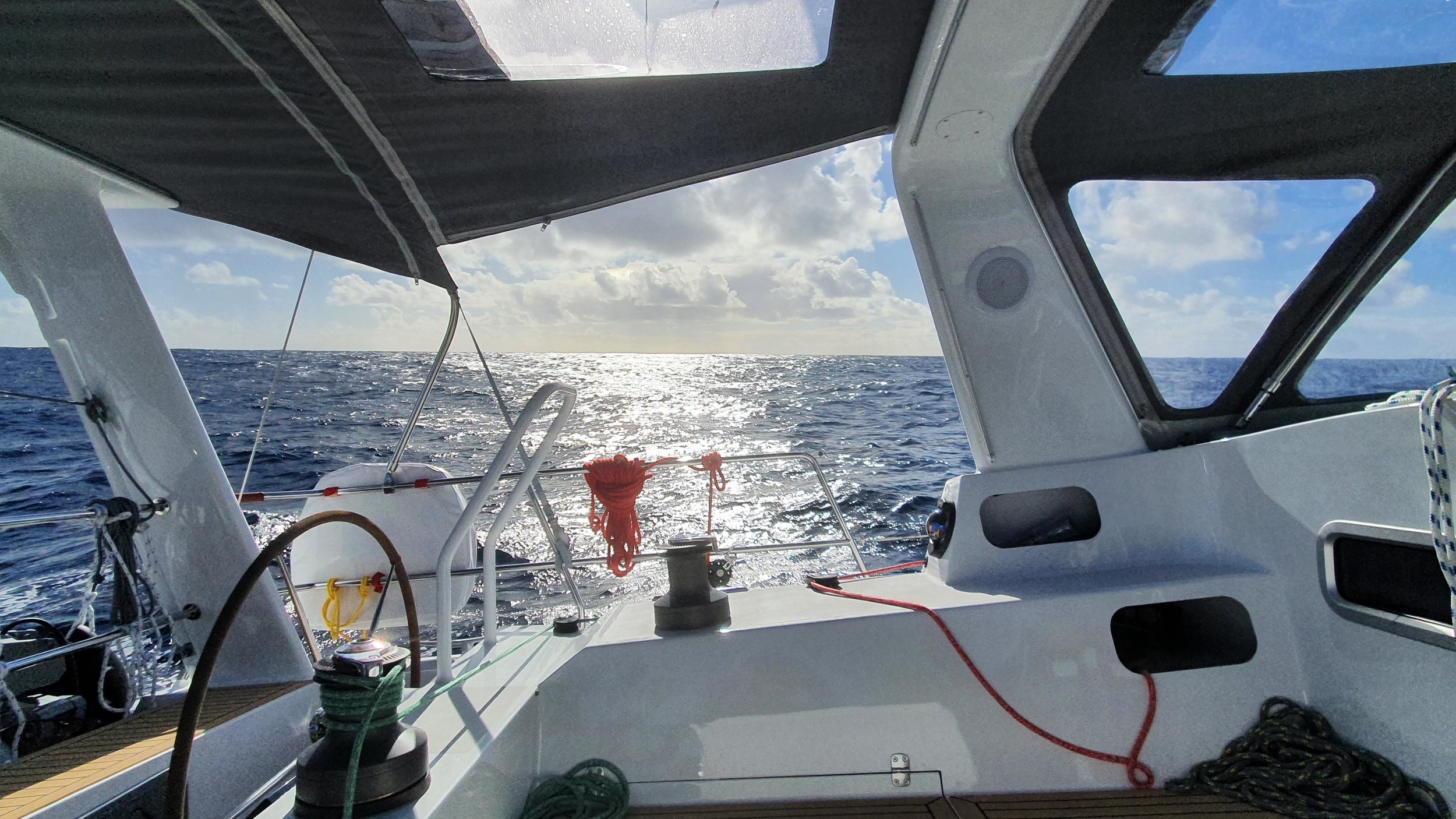
Enjoyable, but cold
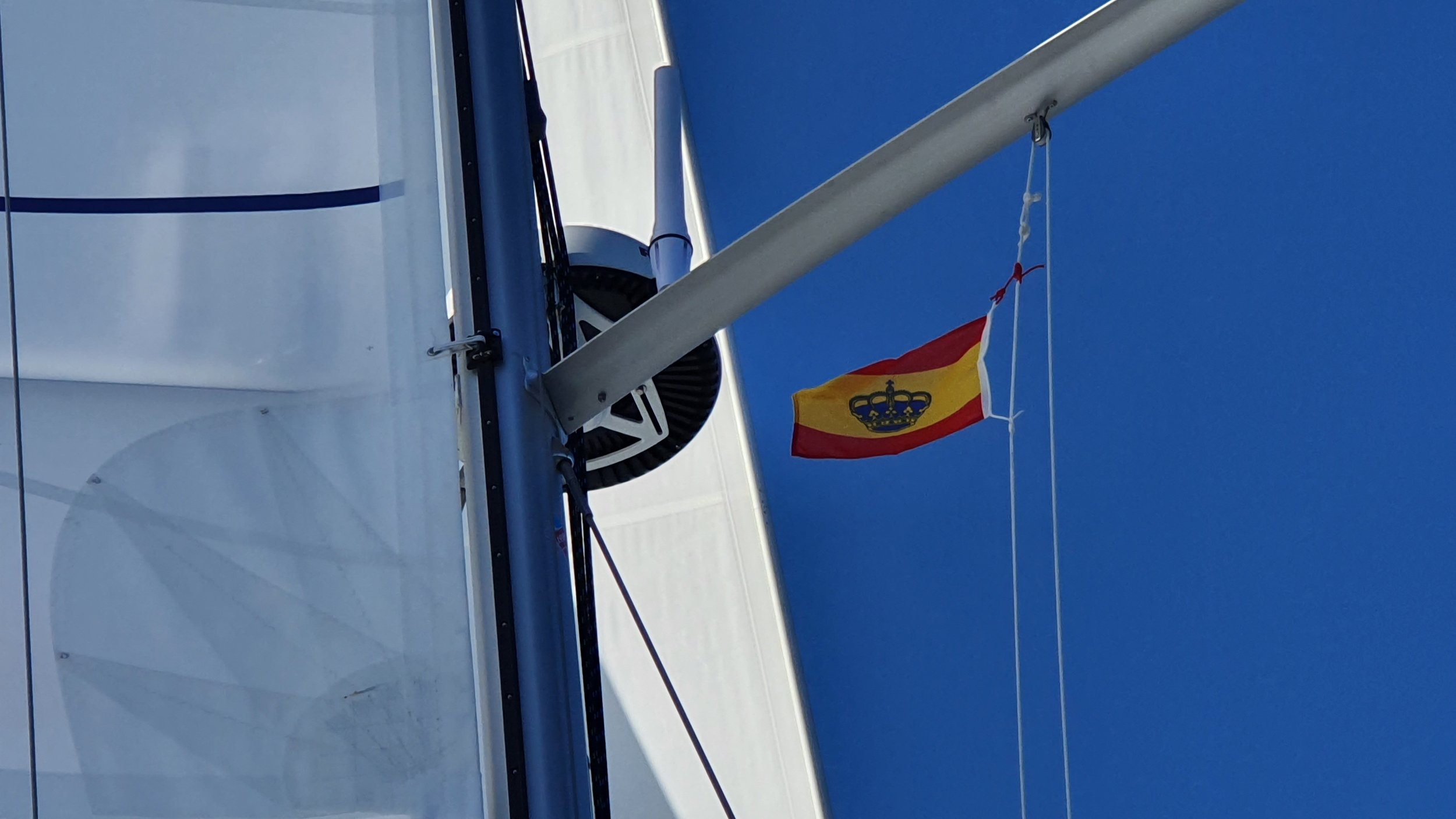
We are in Spanish waters.

Land in sight!

Sunrise in the bay of La Coruña

Approach to La Coruña

Marina Coruña
We spent three days in the city, before we continued our trip to Camairiñas, around Cape Finistere, to Muros and to Vigo.
After a night arrival and due to our early departure, we didn’t see anything of Camairiñas.
Passing Cape Finistere reminded me of my 900 km walk from France to Santiago de Compostela and to Cape Finistere along Saint-James-Way some years ago.
In Muros, Pedro, the best and nicest harbourmaster we have ever met, welcomed us at the pontoon. A few minutes later, we knew everything about the showers, the shops, the bars, and the best restaurant in town. Family business…
After two nights, we left Muros and headed towards Vigo.
There is not much to say about this town. Was it the weather, or was it the ongoing construction work everywhere, I couldn’t say. Honestly, we could not make friendship with Vigo. Perhaps, one must have been born there or live there to like the city. What we really liked was Antonio’s Taperia Habemus in the centre of Bouzas, the old fishermen’s village close to the harbour. And also the Playa de Samil and the Museo do Mar de Galicia.

Cloudy morning in Camairiñas
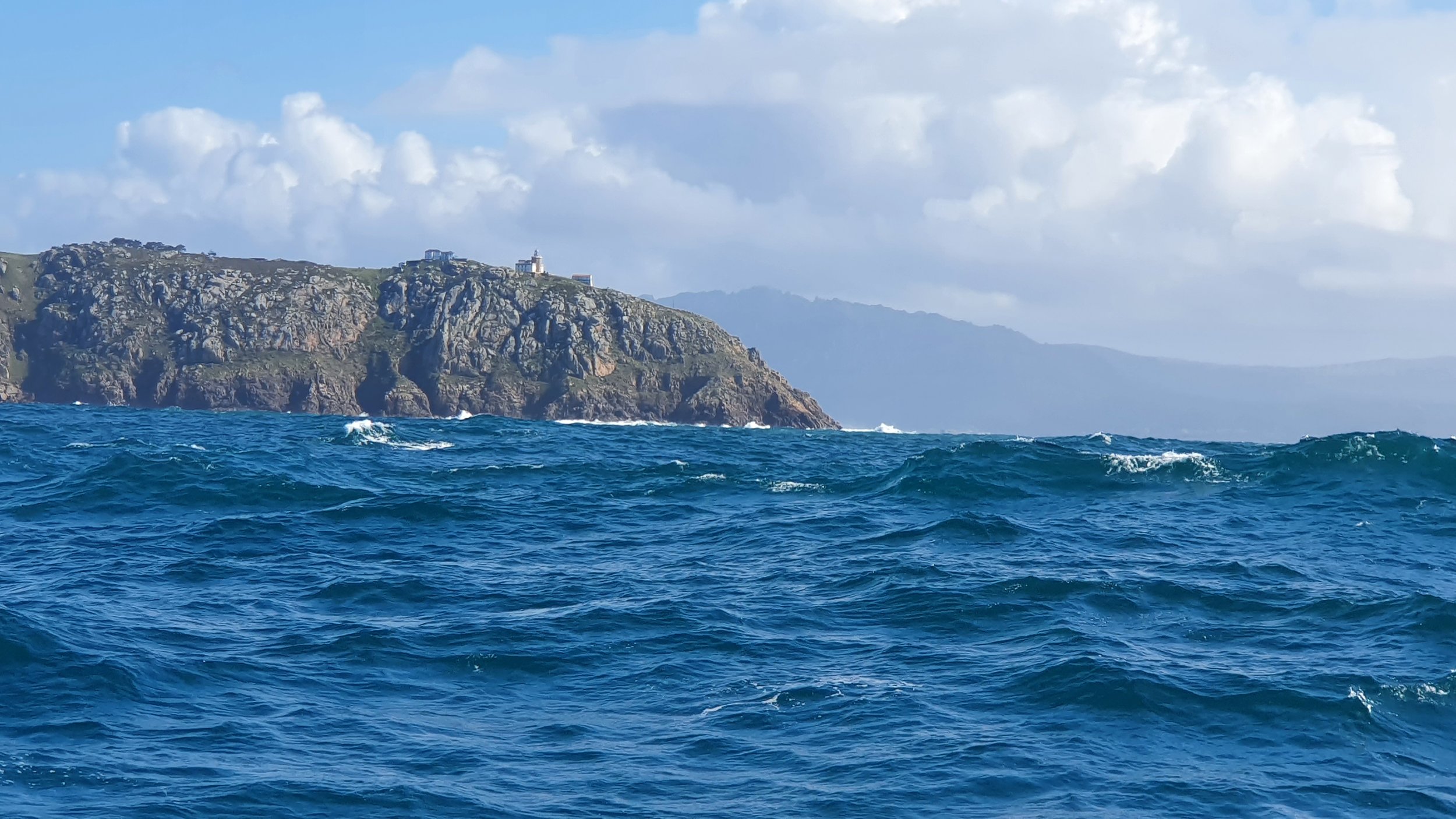
Cape Finistere
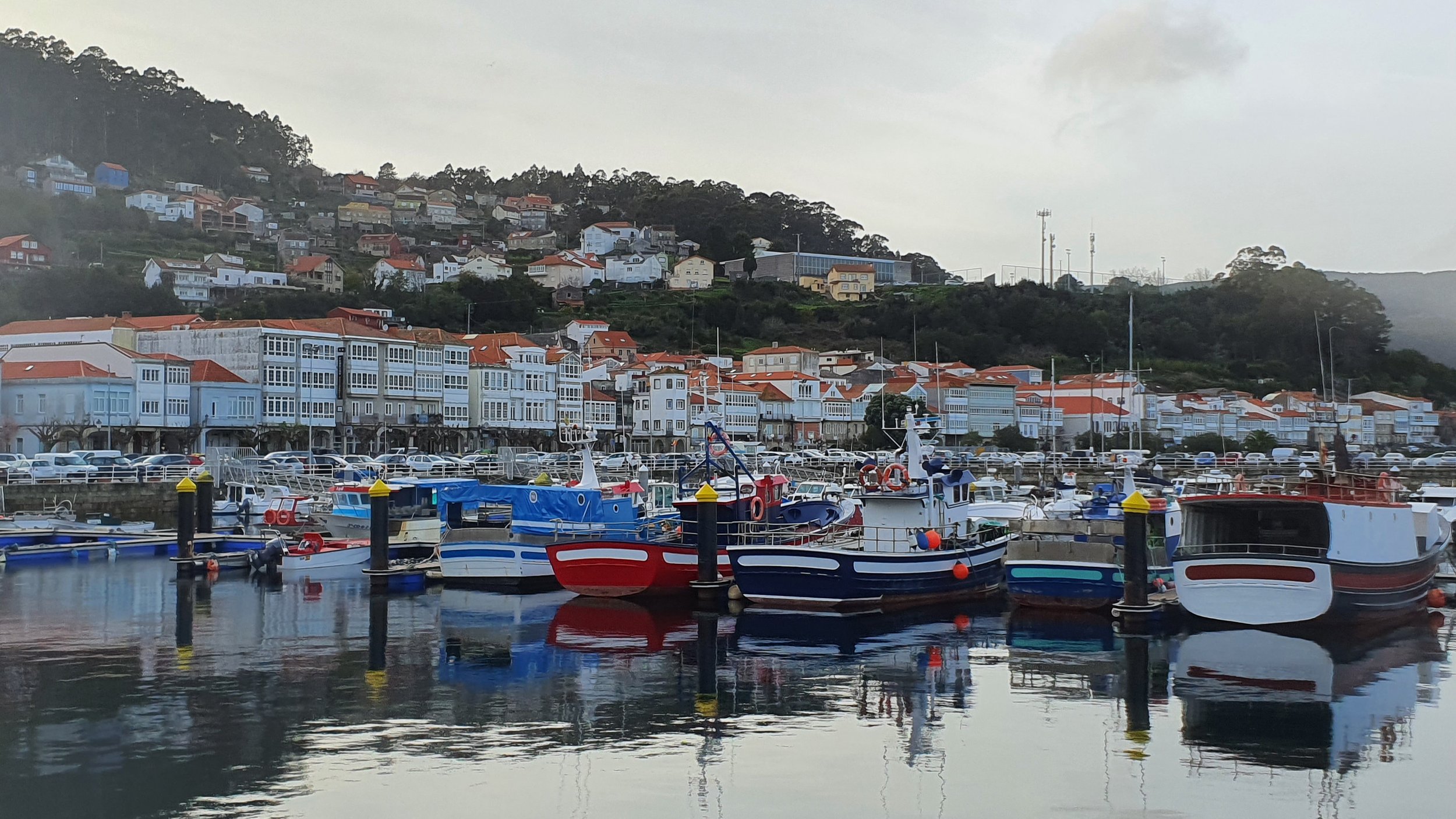
Muros

Clouds and rain in Vigo

Taperia Habemus...

... and el padron with the crew

Museo do Mar de Galicia
Approaching Vigo at 6 Bft
In a small weather window, we sailed only the short distance from Vigo to Baiona, from where we left very early in the next morning towards Viana do Castelo, our first harbour in Portugal. Here we stayed two days to wait for the next period with less wind.
The portuguese coast is well-known for its difficult conditions entering harbours when there are strong westerly winds and high swell. Sometimes, harbours get closed for safety reasons. In Viana do Castelo, we were lucky. But Porto, where we had planned our next stop, closed the harbour for the next days. Therefore, we decided for a longer trip to Cascais at the entrance of river Tajo, near to Lisboa.
The two-days trip from Vianaa do Castelo to Cascais was a smooth ride, with one exception: 10 nm west of Peniche, we were attacked by two orcas!
Orca attacks against sailing yachts are a phenomenon of the past two or three years with first reports in 2019. It started in the area of Gibraltar and Barbate in southern Spain. Meanwhile, those attacks have been reported along the entire atlantic coast of Portugal and Spain up to La Coruña in the North. The reasons for the behaviour of the animals are unclear, and there are different theories about it. Many sailboats have suffered severe damage since, and quite a few had to be towed into spanish or portuguese harbours by maritime rescue services or coast guard ships after having broadcasted a Mayday call.
When sailing in this area, you have to be aware of the risk, however the probabilty of an attack is still not very high. Therefore, we were really surprised and shocked when suddenly ONWO ONOC was heavily hit by something. The autopilot could not control her anymore and she was turned around by almost 180°. Two Orcas repeatedly pushed against the hull and the rudders. We followed the recommended steps: sails down, autopilot off, lifting keel up, hands away from the steering wheels, silence on deck.
After 20 minutes - the Orcas were still attacking us - we changed the strategy: we started the engine and drove backwards. This method seems to create some confusion for the brains of these very intelligent animals. They are unable to swim backwards. And they don’t like a turning propeller in their faces. After a few minutes, they stopped their attacks and disappeared. We saw them 100 meters away, jumping on the surface, and then they were really gone.
ONWO ONOC did not suffer any damage, certainly due to the aluminum hull and the rudders and keel made of steel. Slowly, we could relax again and continued sailing towards Cascais. In the next morning, we moored in the nice marina.
During two days, we discovered Cascais, a very scenic, but also touristic village with its nice streets and beaches and many cosy restaurants.
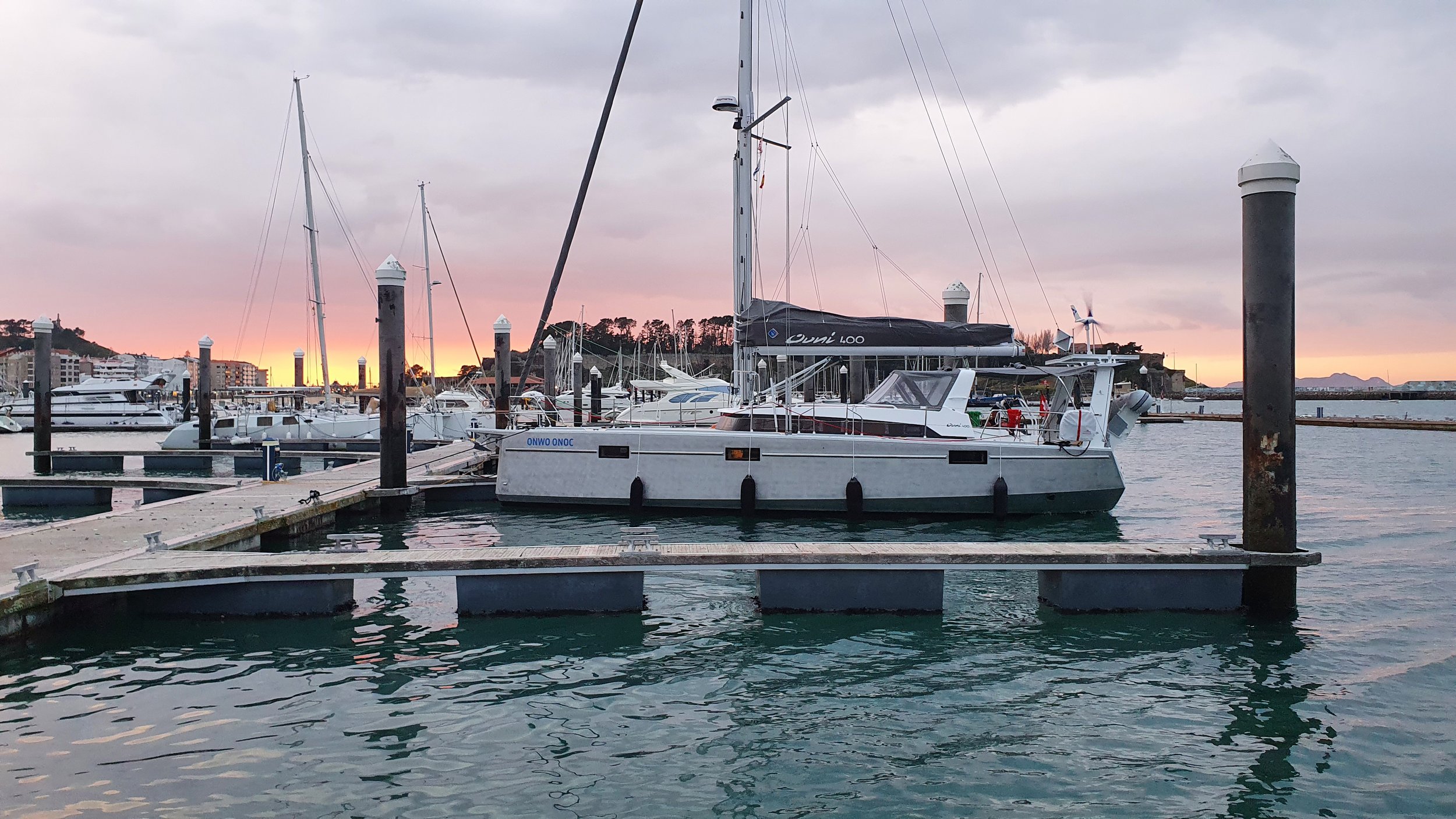
Rainy evening in Baiona
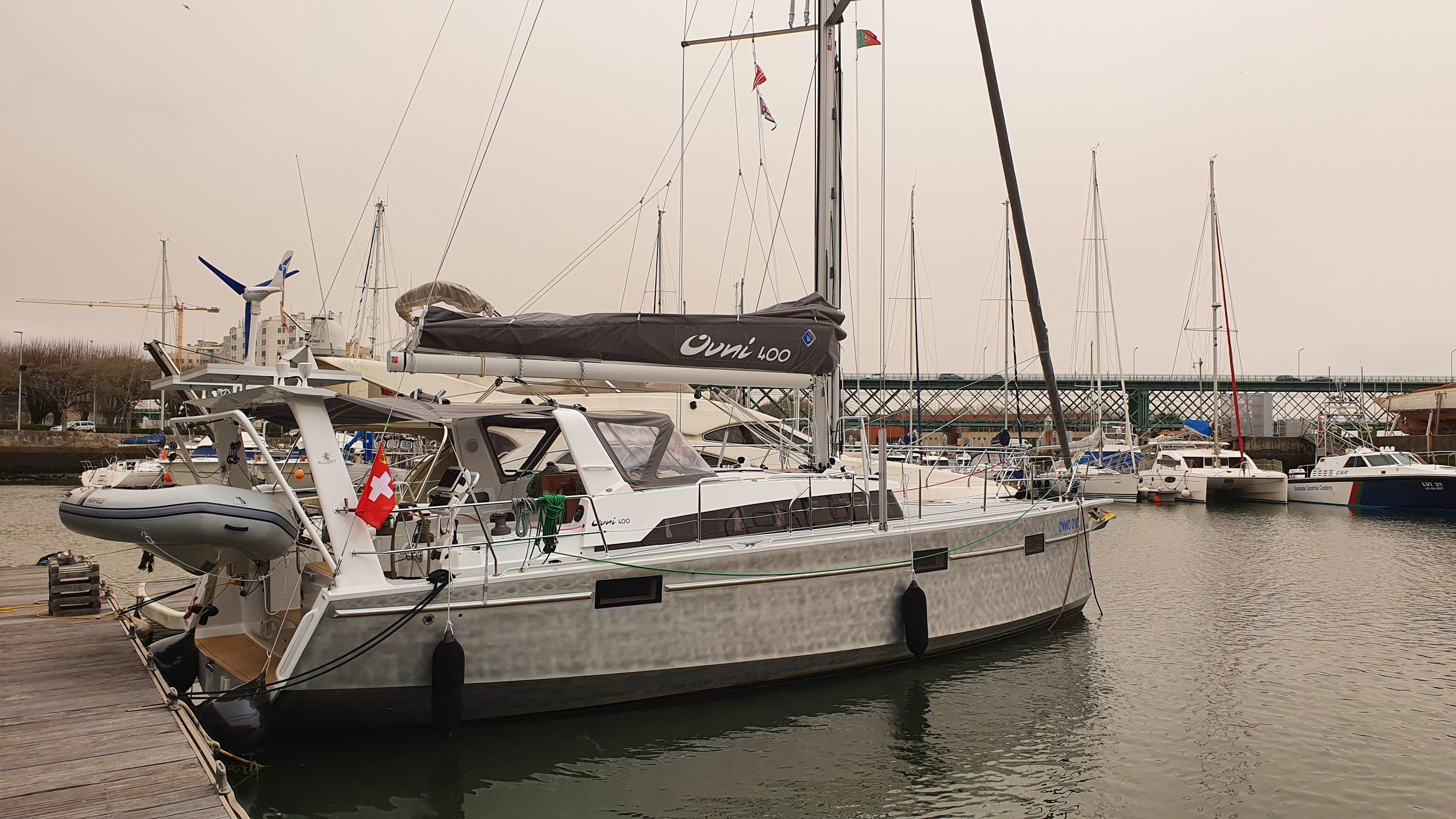
In the small marina of Viana do Castelo
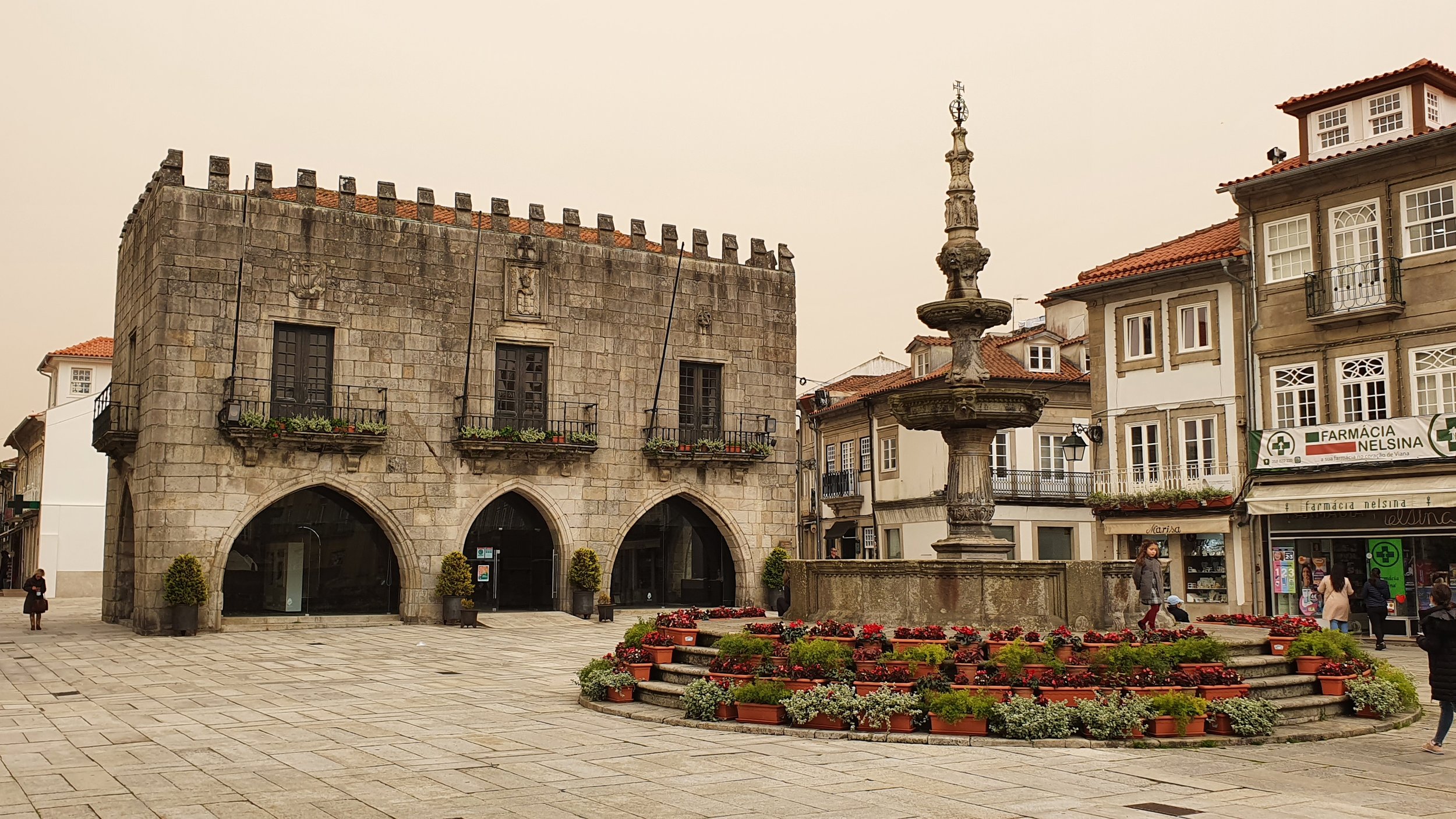
Scenic old town

Nice streets
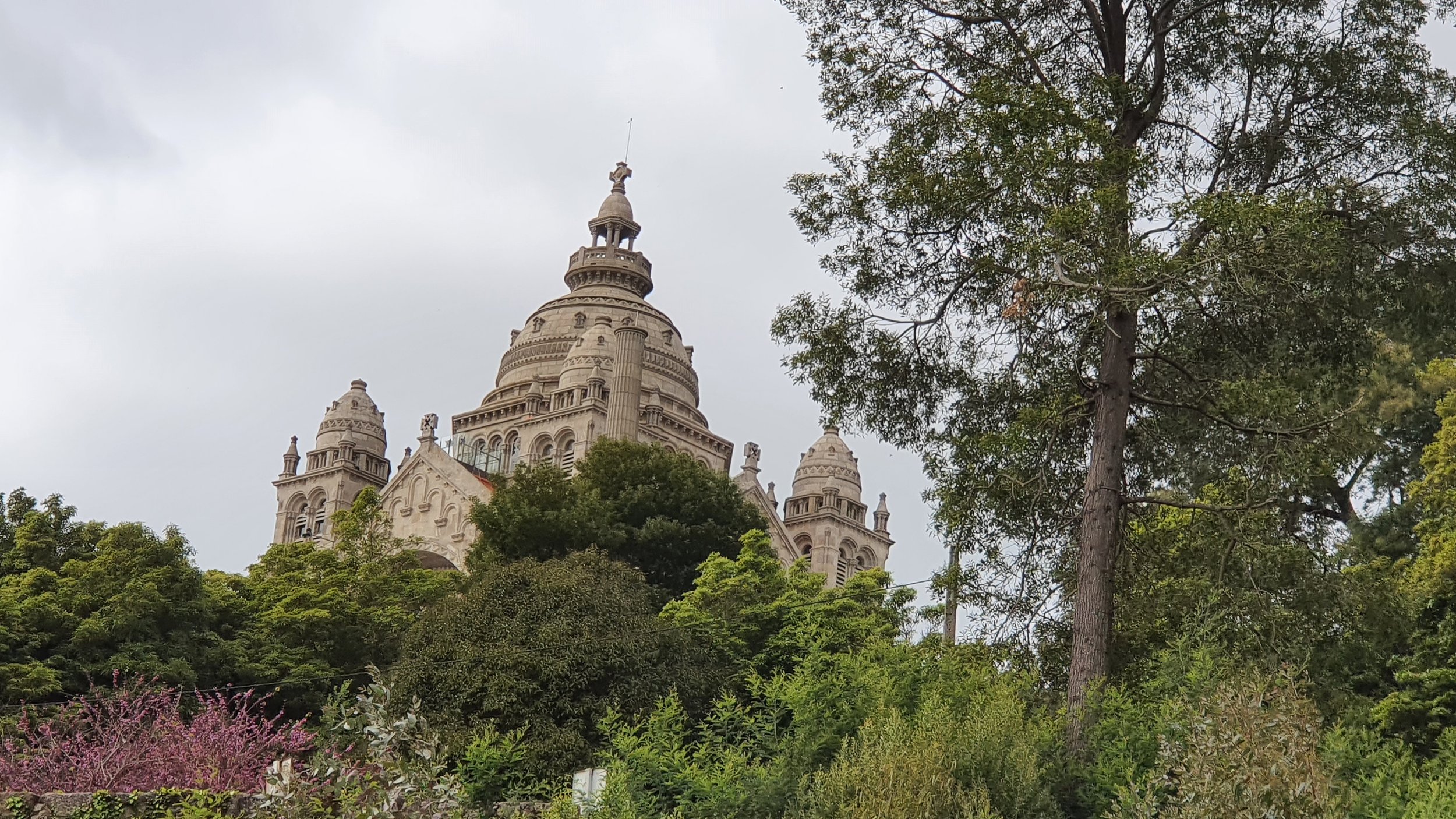
Santuário do Sagrado Coração de Jesus
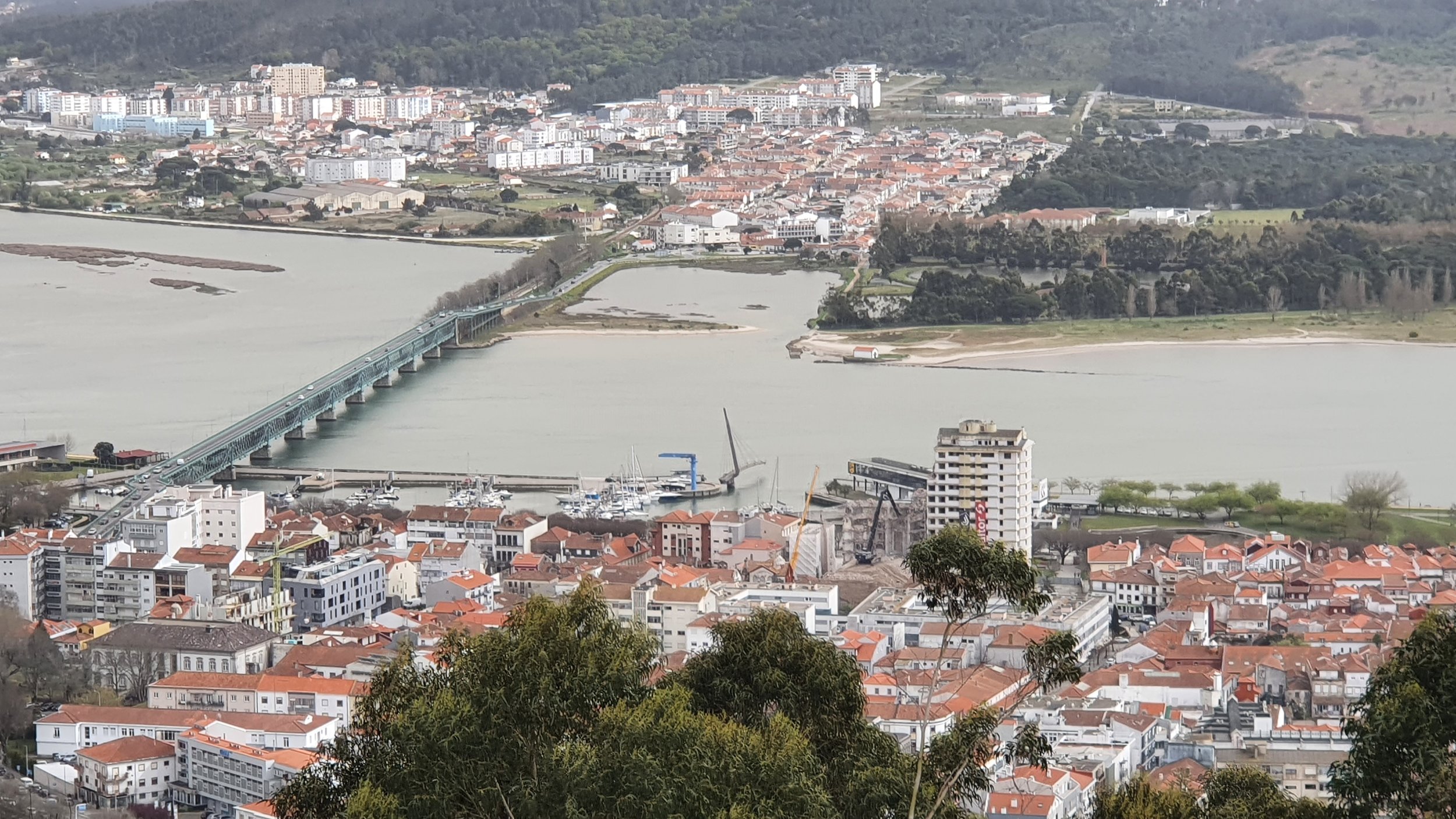
View from Monte Santa Lucia

Sunset after the orca encounter

Marina Cascais
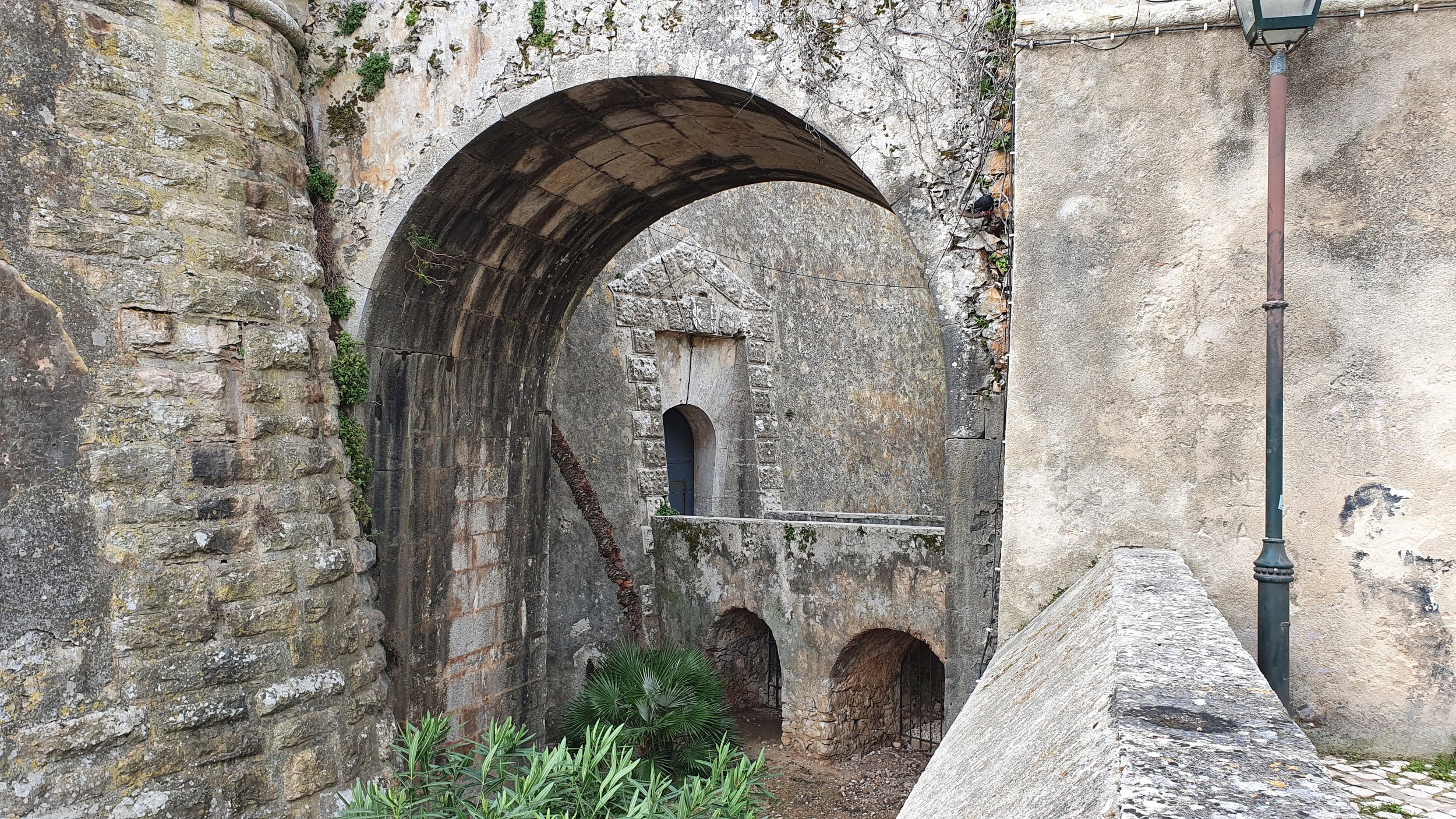
Some impressions of the village
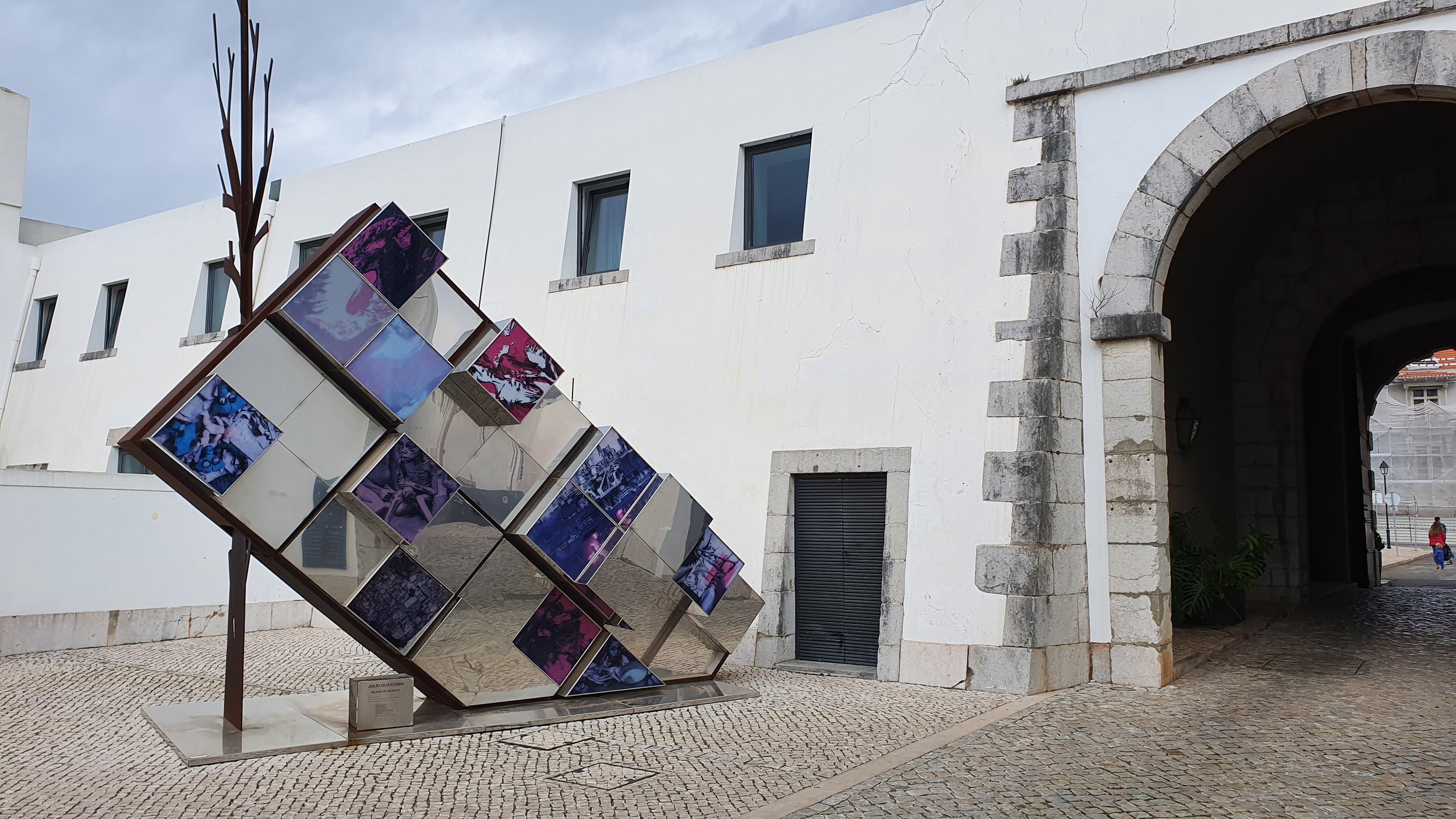



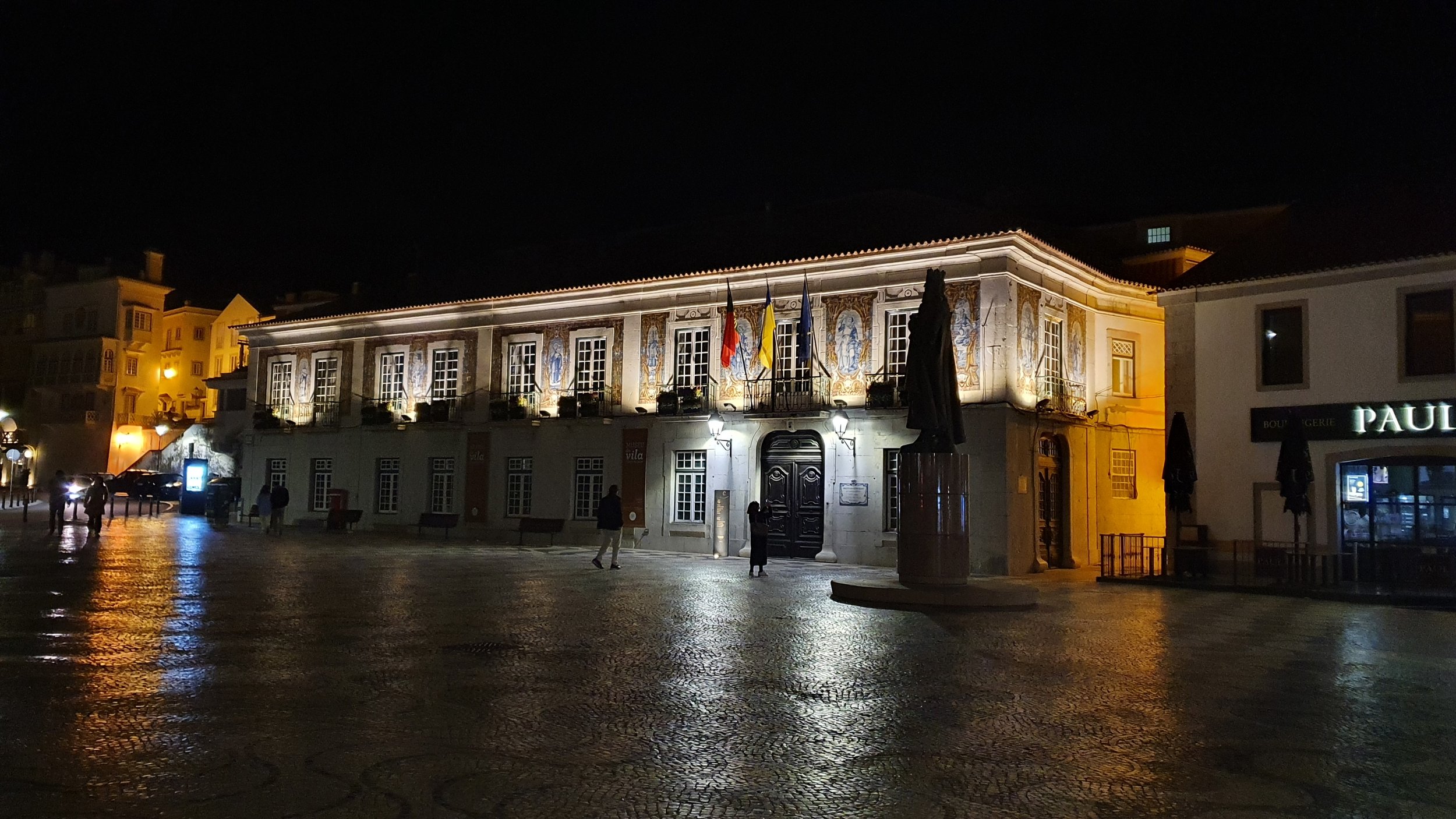
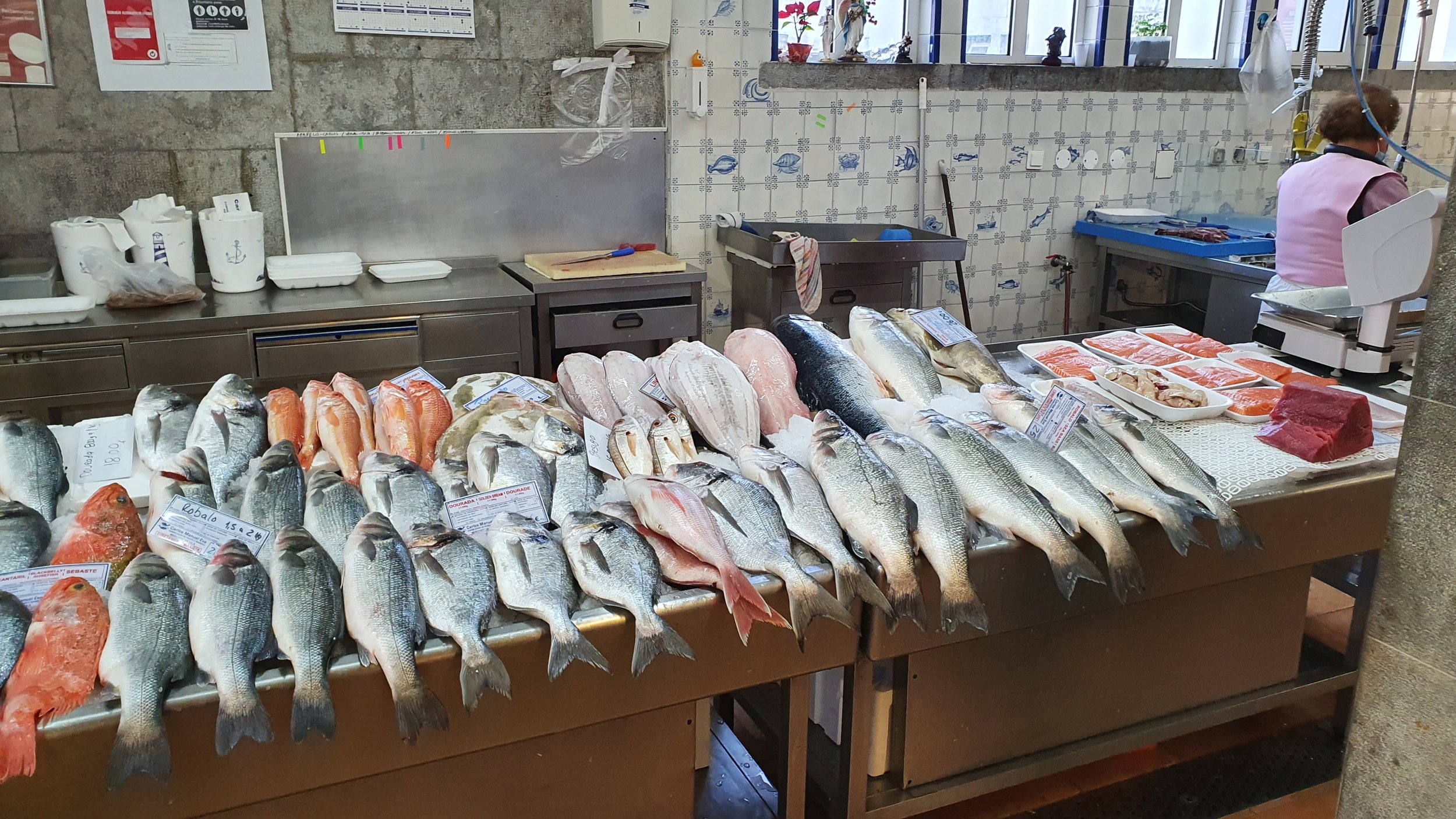
Selection of fishes at the Sunday market

Enjoying local craft beers
From any harbour between Cascais and Portimao at the southern coast of the Algarve, the distance to Lanzarote is similar: approximately 570 nm, a trip of four and a half days. With a suitable weather window forecasted, we decided to go directly from Cascais to Lanzarote. In the next moring, we set sails and headed SSW on a reaching course.
Unfortunately, Christian was hit again severely by seasickness. Since we departed from France, he had to fight with it. But now, with more than 100 hours still to be on the Atlantic, we decided to change our plan and set a new course to Portimao where we arrived in the evening. On the next moring, Christian said “Adios!”, went to Lisboa by train, from where he took a flight back to Switzerland. What a pity!
With the remaining crew of two, Philippe and myself, ONWO ONOC’s bow pointed towards Lanzarote one day later. Again she demonstrated her excellent sailing qualities. For three pigeons, she became a life raft: suddenly they landed on the yacht, at least 150 nm away from any coast. They found shelter for almost one day, before we were passed by a cargo vessel, which they decided to take as the next transportation.
Twelve hours before our arrival, the wind changed its direction against us and increased to 7 Bft. We had to start the engine, to take the sails down, and to motor the last 70 nm towards Marina Rubicon. This last part was really challenging, also due to the high and short waves hitting ONWO ONOC hard. But it had been forecasted like this. Due to our detour to Portimao, we had just missed the weather window by a few hours.
Wet, tired, happy!
On March 28th at 9 pm, after 17 days at sea and with more than 1500 nm logged, ONWO ONOC docked on the reception pontoon in Marina Rubicon.
Only a few minutes later, Philippe and I enjoyed our first beers, tapas, and hamburgers on the island in the marina bar, still in our wet sailing gears.
Tired, but happy and with many exciting impressions to remember.
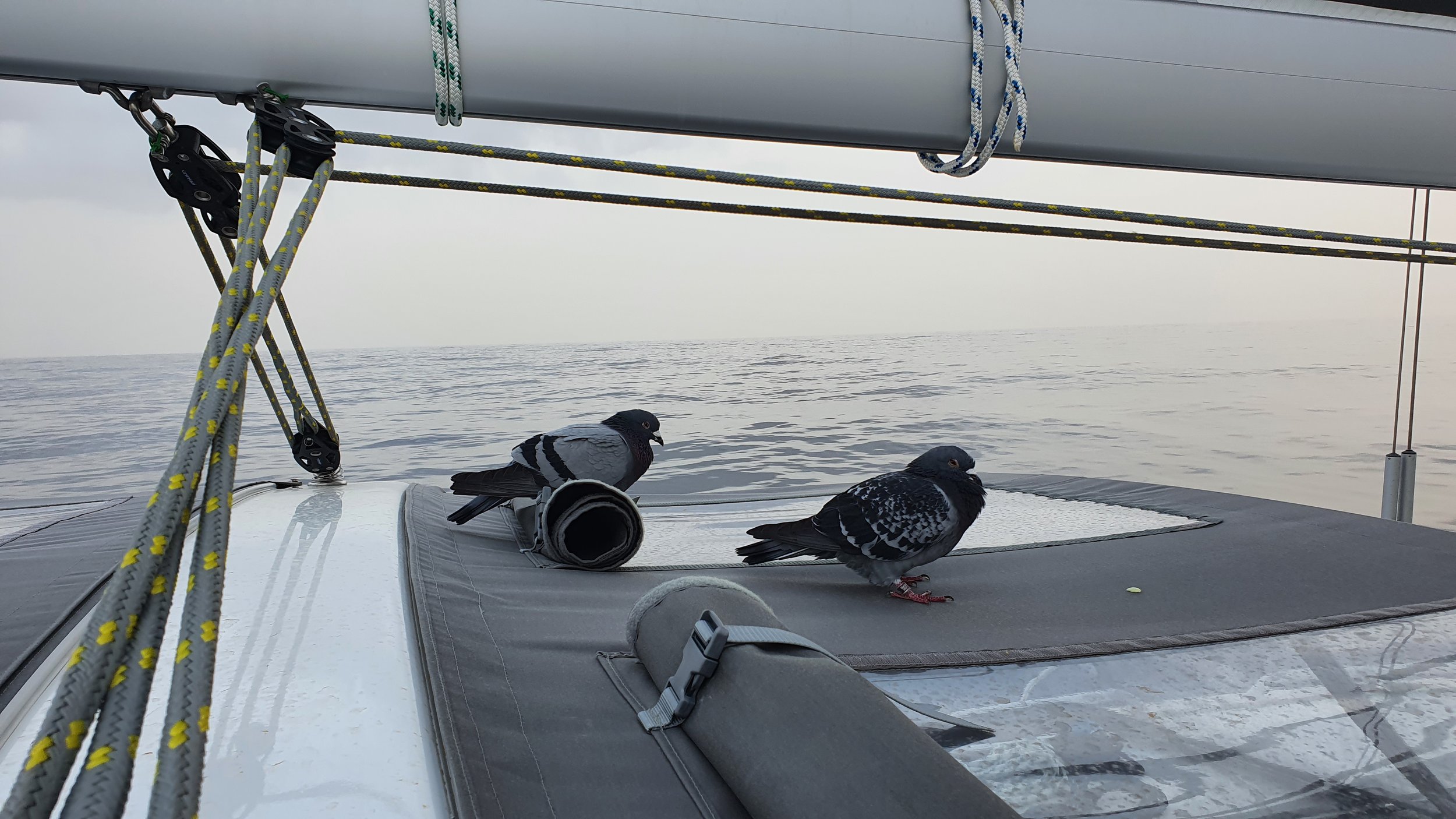
Part time guests on ONWO ONOC
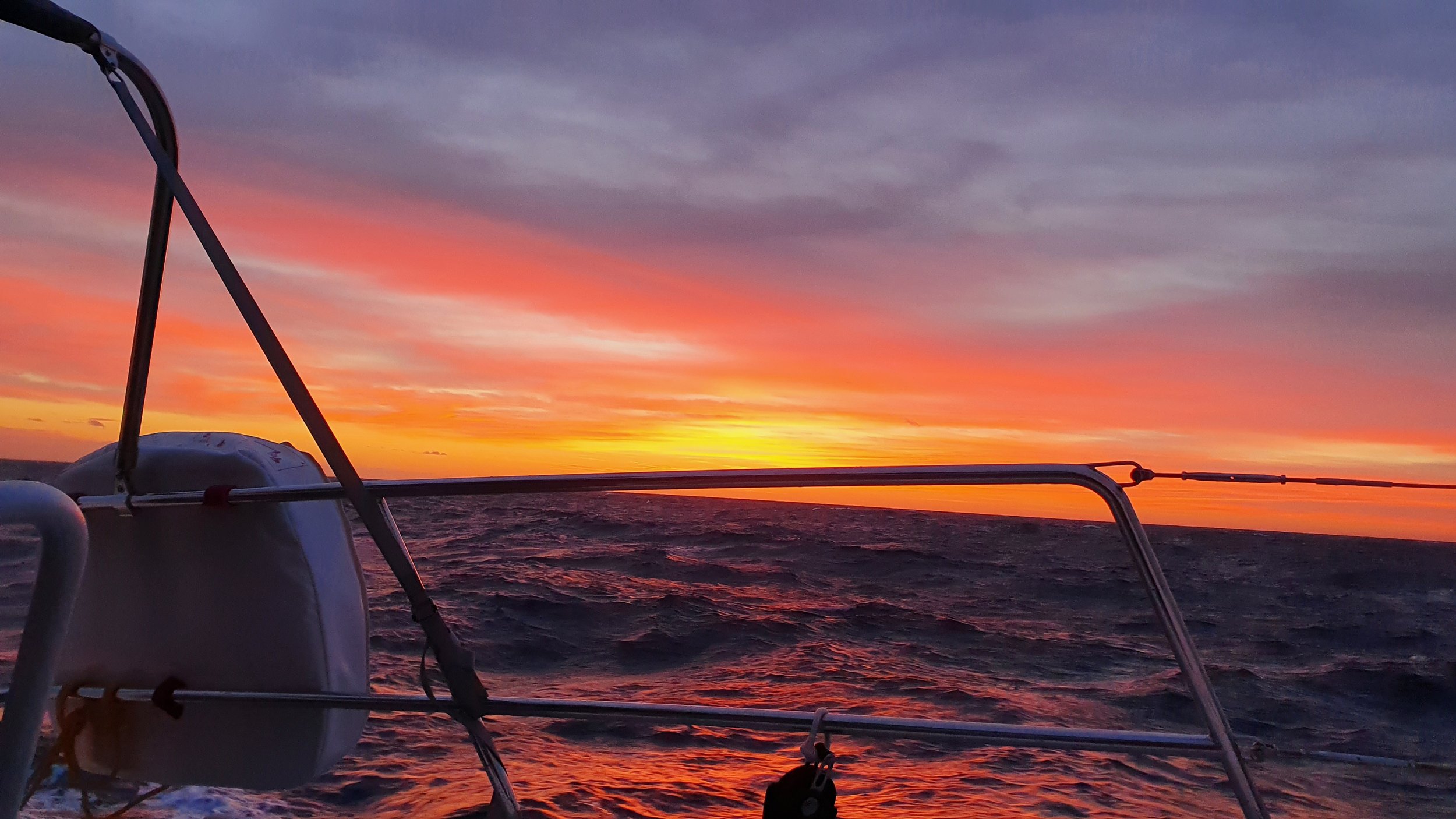
Sunrise ...
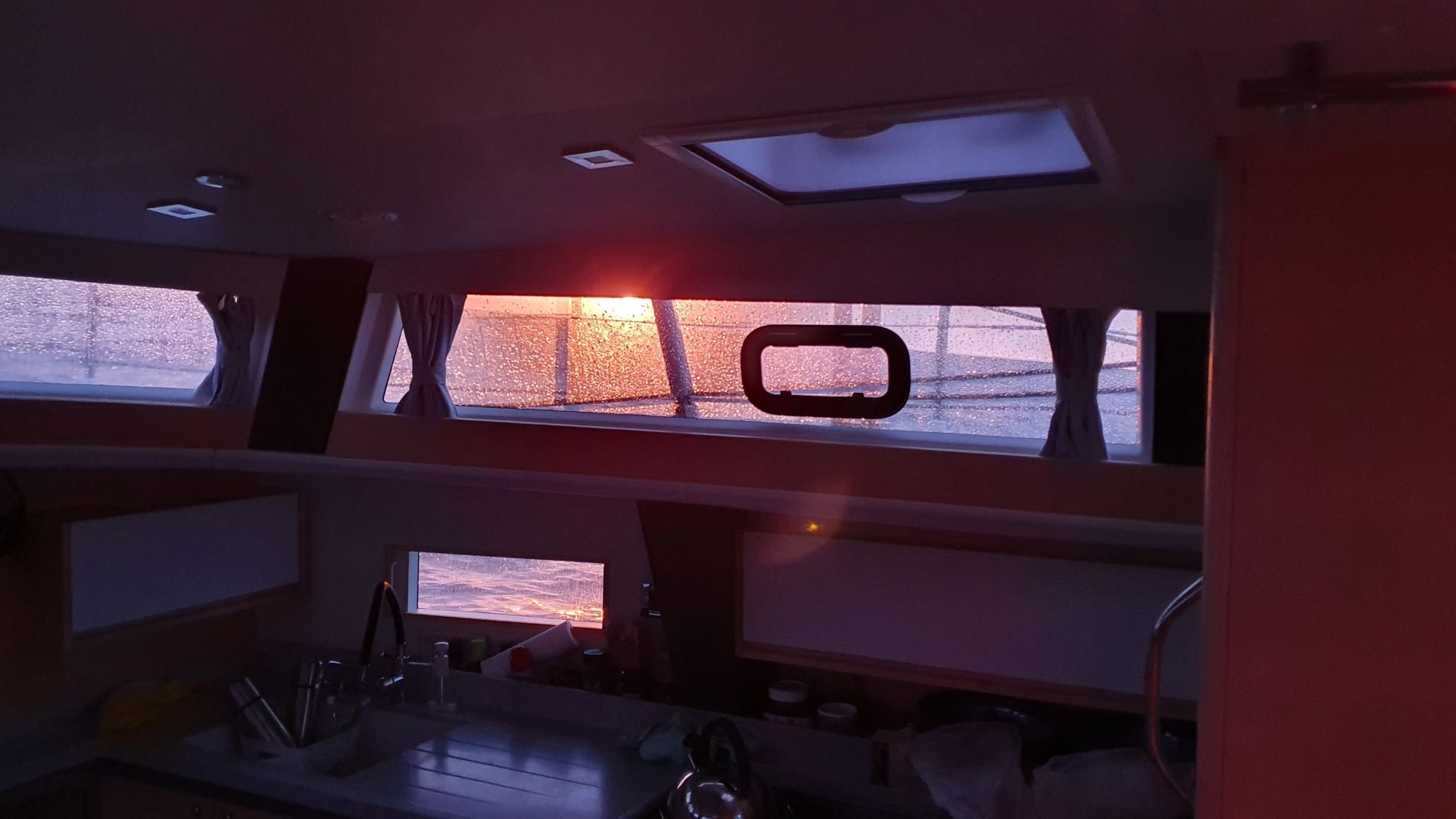
... and sunset

Thunderstorm clouds over Lanzarote

In the morning after our arrival: no wind, no waves...


